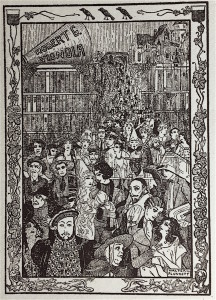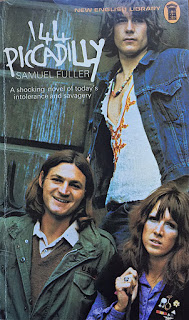
A bookplate from Hollywood 1928 right at the end of the silent movie era. It was done for actor and film director Robert G. Vignola (1888 - 1953) and was found in his copy of Emil Lucka's Eros. The Development of the Sex Relations Through the Ages (Putnam's , N.Y. 1915.) It was drawn by the film costume designer Walter Plunkett, presumably a friend of the distinguished director and 26 years old at the time. By this time Vignola had acted in many movies and had directed at least 60, some of which are no longer to be found.
Vignola's career seems to have come to and end just after 'talkies' came in, a not uncommon fate for older directors. The figures in the bookplate represent stars of the time and probably relate to movies he had made. Other film directors who had bookplates include George Cukor, Bryan Forbes, Charlie Chaplin and Cecil B de Mille.


